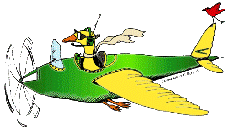Bird Strike Committee Proceedings
Date of this Version
October 2002
Document Type
Article
Abstract
Maximized efficiency and quality assurance of equipment is essential to both the manufacturer and the end-user. Quite uniquely, one UK manufacturer of bird control equipment sought the views of the aerodrome bird control staff who used it. A simple tick-box questionnaire, designed by an independent biologist, was sent to each aerodrome and 37 returned completed forms, representing about half of known users in the UK. A simple subjective analysis of these produced some unexpected results that are presented here. The survey was not dissimilar to the original trials of bird distress calls on RAF airfields undertaken during the 1960's, thus allowing some direct comparison. The early playback equipment was not as robust as that currently available; the distress calls were not digitally enhanced in the 1960s; call playback fidelity should, therefore, be clearer and the response improved over the intervening 30 years. Grouping all the returns, the latest results appeared to show very much less efficiency than was found in the original RAF trials, in some species by as much as 50%. However, when the returns were analyzed by type of bird control organization on the aerodrome, the results revealed that the problem was not with the distress call or the equipment, but rested with who was using it on the aerodrome. It highlights yet again, whether the problem is gulls in the UK or rheas in South America, that equipment is ultimately only as good as the person using it. The fact that one group can use it successfully and efficiently, and reports the same to the manufacturer, is good assurance; the other groups have to rethink their strategy.


